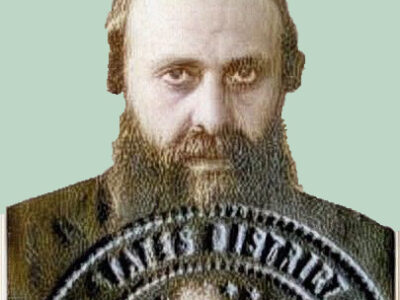As Montreal-area author Elaine Kalman Naves was preparing to write the book that eventually became Journey To Vaja: Reconstructing the World of a Hungarian-Jewish Family (McGill-Queen’s University Press), she considered carefully whether to present the story as a non-fiction chronicle or as a novel.
The book tells the story of the Weinbergers, a farming family that for two centuries lived in the Nyirseg, a sandy region between the Great Hungarian Plain and the foothills of the Carpathians. The Weinbergers were among the nearly half a million Hungarian Jews that the Nazis deported to death camps in 1944.
Since Naves is telling the story of her own family, this is one woman’s poignant search for her roots. “I became very interested in writing it after I had my first daughter,” she explains. “I wanted my daughter to know about her past.”
In doing the research, Naves conducted more than 150 taped interviews, including many with her father, Gusti Weinberger, one of the few members of a vast extended family to survive the Nazi era. She also did much archival and historical research and visited Hungary three times.
The book also relies upon a packet of some 100 letters written between family members in the 1930s and 1940s. Most were penned in the six painful weeks of the Nazi’s frenetic annihilation of Hungarian Jews in April and May of 1944, which Winston Churchill once described as “probably the greatest and most horrible crime ever committed in the whole history of the world.”
Naves focuses more on the vibrant life of Hungary’s Jews than on how many of them died. She wrote Journey to Vaja in a style that she describes as “narrative non-fiction.” While the book reconstructs conversations and details of life of centuries past, she asserts that nothing was made up, and every word is backed up by reliable human or documentary sources.
“Some people call this type of book ‘creative non-fiction’ or the ‘non-fiction novel,’” she says. “What it means is that you’re completely wedded to telling the truth, but you’re telling it in a narrative way because a lot of readers enjoy acquiring information by means of a story.”
For Naves, a writer and journalist, it was important not to tell her family saga as a novel because “I wanted the reader to trust me and to trust that I’m telling a true story.”
Naves said the stories that her father and a cousin of her grandmother had told her contained many voices of long-dead ancestors, relatives and other people. “There were already voices and dialogue passed down in these stories. I wasn’t inventing it. All I had to do was translate it from the Hungarian into English.”
Complete with photographs, family charts and maps, Journey to Vaja is family history at its most vivid. It was the basis of an hour-long documentary in the series Ideas that aired nationally on CBC radio last fall. ♦
© 1997






